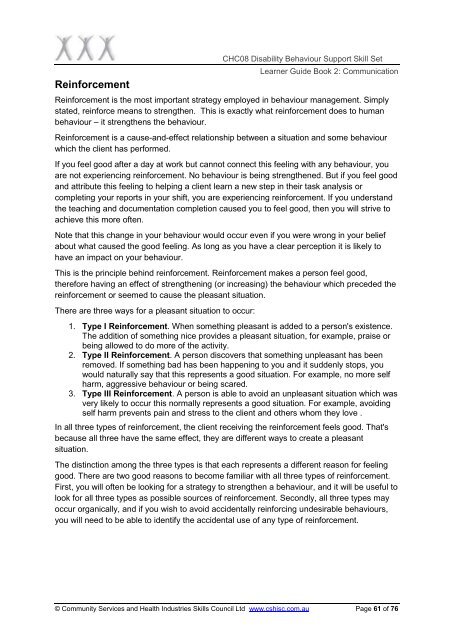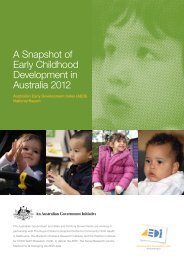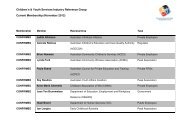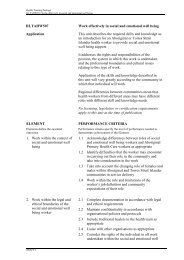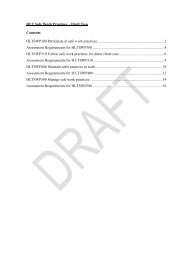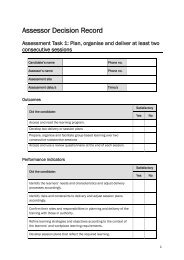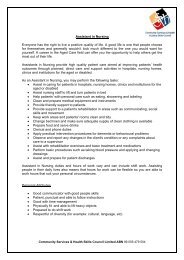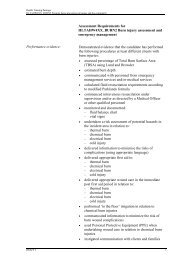CHC08 Disability Behaviour Support Skill Set Learner Resource ...
CHC08 Disability Behaviour Support Skill Set Learner Resource ...
CHC08 Disability Behaviour Support Skill Set Learner Resource ...
You also want an ePaper? Increase the reach of your titles
YUMPU automatically turns print PDFs into web optimized ePapers that Google loves.
Reinforcement<strong>CHC08</strong> <strong>Disability</strong> <strong>Behaviour</strong> <strong>Support</strong> <strong>Skill</strong> <strong>Set</strong><strong>Learner</strong> Guide Book 2: CommunicationReinforcement is the most important strategy employed in behaviour management. Simplystated, reinforce means to strengthen. This is exactly what reinforcement does to humanbehaviour – it strengthens the behaviour.Reinforcement is a cause-and-effect relationship between a situation and some behaviourwhich the client has performed.If you feel good after a day at work but cannot connect this feeling with any behaviour, youare not experiencing reinforcement. No behaviour is being strengthened. But if you feel goodand attribute this feeling to helping a client learn a new step in their task analysis orcompleting your reports in your shift, you are experiencing reinforcement. If you understandthe teaching and documentation completion caused you to feel good, then you will strive toachieve this more often.Note that this change in your behaviour would occur even if you were wrong in your beliefabout what caused the good feeling. As long as you have a clear perception it is likely tohave an impact on your behaviour.This is the principle behind reinforcement. Reinforcement makes a person feel good,therefore having an effect of strengthening (or increasing) the behaviour which preceded thereinforcement or seemed to cause the pleasant situation.There are three ways for a pleasant situation to occur:1. Type I Reinforcement. When something pleasant is added to a person's existence.The addition of something nice provides a pleasant situation, for example, praise orbeing allowed to do more of the activity.2. Type II Reinforcement. A person discovers that something unpleasant has beenremoved. If something bad has been happening to you and it suddenly stops, youwould naturally say that this represents a good situation. For example, no more selfharm, aggressive behaviour or being scared.3. Type III Reinforcement. A person is able to avoid an unpleasant situation which wasvery likely to occur this normally represents a good situation. For example, avoidingself harm prevents pain and stress to the client and others whom they love .In all three types of reinforcement, the client receiving the reinforcement feels good. That'sbecause all three have the same effect, they are different ways to create a pleasantsituation.The distinction among the three types is that each represents a different reason for feelinggood. There are two good reasons to become familiar with all three types of reinforcement.First, you will often be looking for a strategy to strengthen a behaviour, and it will be useful tolook for all three types as possible sources of reinforcement. Secondly, all three types mayoccur organically, and if you wish to avoid accidentally reinforcing undesirable behaviours,you will need to be able to identify the accidental use of any type of reinforcement.© Community Services and Health Industries <strong>Skill</strong>s Council Ltd www.cshisc.com.au Page 61 of 76


